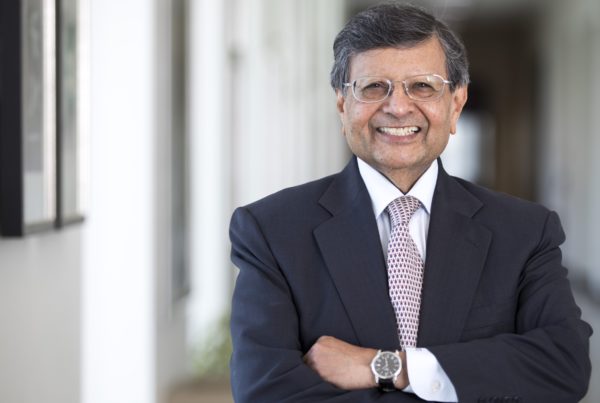Published: Aug 27, 2003 in Knowledge@Emory
The last quarter-century has seen profound shifts in the way American companies do business. Rising costs and competitive pressures have driven firms to restructure, often downsizing and outsourcing non-core and even core business functions. As business shifted to accommodate a more global environment, workers also grappled to adjust to employers who no longer seemed to protect their interests, and to the continuing threat of unemployment.
While business has become lean and mean, many American workers have rebounded and are creating their own work paths, not leaving it to a company to do so. But as restructuring and outsourcing remain the norm, how will the role of work evolve?
To understand the origin of the restructuring phenomenon, it helps to review the challenges faced by U.S. companies in the recent past. Jagdish Sheth, an expert in global business and a professor of marketing at Emory University’s Goizueta Business School, explains that various factors initially propelled companies to begin streamlining their operations. “In general, over the last 25 to 30 years industries became less competitive. As a nation we were affluent, but labor costs continued to rise and the cost of raw materials increased, especially oil, due to a shift from using metals to plastics, which required petrochemicals.”
The costs of marketing and advertising became higher as well, says Sheth. “At the time, firms were doing everything in house – that was the traditional vertical integration model.” But as global competition intensified, Sheth notes, U.S. manufacturers were hurt. “When imports were allowed in to compete with U.S. products, shockwaves resulted. Industries that America had invented and commercialized suddenly couldn’t make money anymore. We saw this with consumer electronics first. Other countries like Japan, Korea, and later China were able to make good quality products at much lower costs. Naturally, consumers were not willing to pay higher prices.”
How did companies respond to this margin squeeze? They began to take a hard look at their cost structures, says Sheth. “Firms found that manufacturing was a big cost outlay and began to move their factories outside of the; U.S. because it was cheaper to do so. That was the first wave of survival by outsourcing. American firms would provide quality standards, and have the goods made in China or elsewhere.”
High labor costs also encouraged firms to become more innovative, exploring the use of robotics, intelligent machine tools and offering consumers more self-service options. Further cost savings were realized by breaking away from the vertical integration model. “Companies began to move toward ‘virtuous integration,’ outsourcing a large portion of the operations and employing fewer managers to oversee them. Downsizing became even more prevalent.”
Independent Workers
A big part of firms’ labor costs, explains Sheth, is benefits. “In much of the rest of the world, health care expenses and pensions were borne by governments,” but in the U.S. companies were responsible for paying a large portion of this cost. “This was globally noncompetitive. Firms could no longer afford to bear the future obligations of retirement benefits, especially as life expectancies were going up concurrently.”
The answer, Sheth says, was to change employees’ work lives. “Companies would give workers incentives to retire early. They would, for example, combine 12 offices [in different locales] into three new offices. Since many people in one state would have no interest in moving to another, these location shifts helped firms shed employees.”
For clerical staff support, temporaries were the new game in town. “Look at the success of outfits like Manpower Inc. If the staff is not on the company’s payroll, the firm doesn’t have to pay for benefits,” notes Sheth.
Indeed, according to a survey by the American Staffing Association, U.S. sales of temporary and contract staffing services totaled $13.1 billion in the first quarter of 2003, up 5% over the same period in 2002.
With the rules of employer and employee engagement forever changed, new styles of work continue to emerge.
Employees have become more and more receptive to the idea of greater work independence. “People became more interested in working from home, managing household activities, and so forth. More men began to work from home, too,” observes Sheth. “By 2020, I believe the largest single employer in the U.S. will be self.
Bradd Shore, professor of anthropology at Emory and director of the Center for Myth and Ritual in American Life (MARIAL), notes that as many industries go through business cycles of expansion and contraction, companies are more inclined to both contract out labor and offer individually controlled benefits, like 401(k)s. “You tend to find that employers aren’t encouraging lifetime loyalty to companies,” he notes.
Individual Outcomes
Several trends will emerge from this revamping of the workforce, says Sheth. “First, I see us trending toward a single wage earner model. However, more and more women will be the breadwinners. Second, as the cost of entry is so low in today’s information services economy, entrepreneurship will increase. More people will be going into business for themselves. Third, people will seek alternative experiences, beyond just making money. The market for adult education will grow. And finally, they will look for fulfillment of spiritual needs.”
Shore has a slightly different perspective. “I don’t believe we’ll necessarily be going back to the model of single-wage-earner families. With the uncertainty of the business cycle, families prefer to hedge their bets and have multiple incomes. But what I do think we’ll see is cyclical periods of temporary single-wage-earner patterns, as one member of a family gets laid off and someone else has to pick up the slack.”
Shore does agree that people will change jobs much more often. “I see a trend toward what I call the modularization of labor and time management. It maximizes flexibility by allowing things to be done in chunks of time. Working patterns are becoming more flexible.”
In a survey conducted by the Sloan Foundation on desirable work patterns, the majority of respondents said they didn’t want part-time work, notes Shore. “But everyone wanted flexibility – flextime, flexible hours, even a flexible workplace and telecommuting options where possible. People want to be able to chunk their work patterns and juggle them according to personal needs.”
Andrea Hershatter, a senior lecturer in organization and management, also notes studies by Yankelovich, a marketing consultancy specializing in lifestyle trends, which indicate that time has replaced money as our most scarce commodity. “Respondents who were asked if they would trade dollars for time preferred more time over more money by a margin of two to one. It appears that beyond a certain income threshold, this trend will continue. The difference between the past and the future is that people will be much more willing to act on these inclinations,” observes Hershatter, who is also an assistant dean and director of the BBA program at Goizueta.
In Hershatter’s view, the impetus for balance will be a merging of styles and needs. “There is no question in my mind that, at least in the upper echelons of management, workers will be more inclined to see themselves as free agents. At a certain point in their lives those in hierarchical, traditional corporations will seek exit strategies in increasing numbers. They will find ways to use their cumulative experiences as an intellectual toolbox that will enable them to build a work/life balance,” she says. “Although entrepreneurial ventures are all consuming, entrepreneurial careers may involve pursuing multiple paths simultaneously. For example, a seasoned executive might participate in new ventures on a limited basis, engage in freelance consulting, and take on a project-based work assignment.”
In addition, these intellectual free agents may ultimately redefine the term “having it all.” “‘All’ in the future should include the time to do things well, to utilize intellectual potential and to live life thoughtfully and with gusto,” notes Hershatter, who is coauthoring a book entitled Business at the Speed of Molasses, which is due out next spring and will discuss many of these themes.
For now, Shore believes that people are changing their notion of what a career is. “It’s still essentially based on mobility over time, but instead of moving up – a corporate ladder model – it’s now more of a bridge model, where you move laterally. You’re not necessarily working in one company or even in the same career for your whole life. That encourages ‘individuation.’”
One of the hallmarks of American culture, adds Shore, has been the idea of the self-made person. “It’s the idea of the entrepreneurial model of the self. We tend to focus in this country on a long period of general education. Unlike in European countries, for instance, where people tend to specialize much earlier, our liberal arts system is designed to train people to enter a number of different worlds. So it encourages people to refashion themselves confidently. Even our family model is to move up and move on – to leave the house of the parents.”
Shore also sees connections in this pattern to postmodernism. “In the postmodern world, people have multiple commitments. Nothing is linear. Today’s labor patterns reinforce that idea – there is no single trajectory anymore.”





